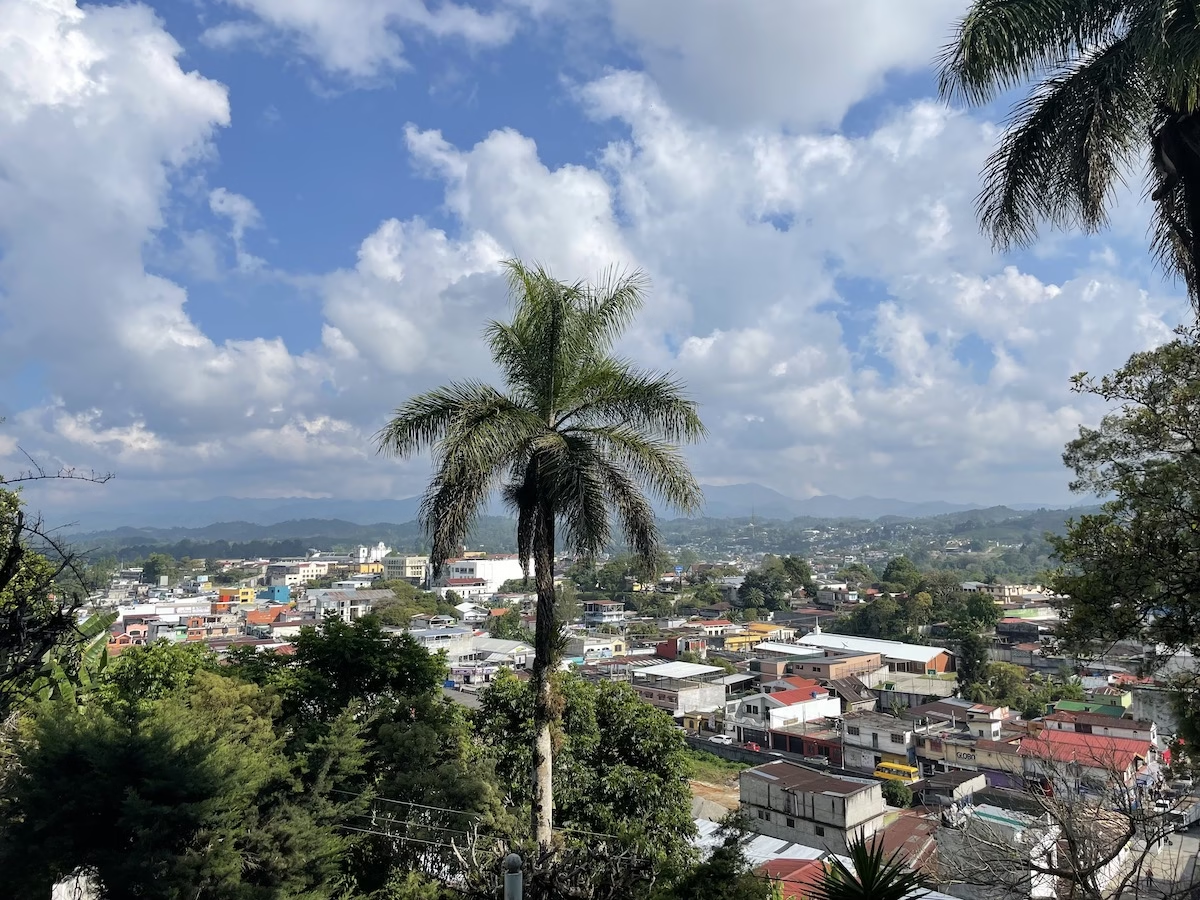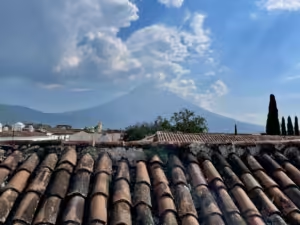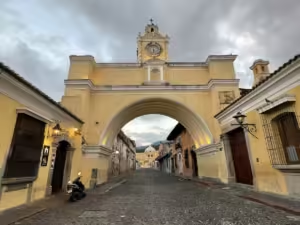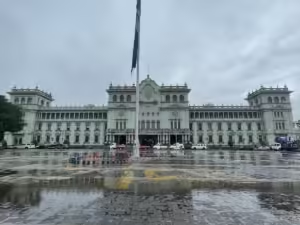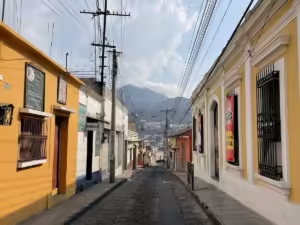Poets have written a million words inspired by the beauty of birds and flowers. There are few flowers more beautiful than orchids. And there are even fewer birds more impressive than the Resplendent Quetzal. If you want to see both orchids and quetzals, you have to travel to Cobán, located at the edge of the highlands of Guatemala.
Getting to Cobán
The city of Cobán is a little bit off Guatemala’s beaten tourist path. Most travelers seem to rush past it from Antigua or Lake Atitlán on their way to Semuc Champey. While the city itself is pretty whatever and skippable, the flora and fauna of the surrounding countryside are pretty spectacular. Travel to Cobán to explore the misty cloud forests that cling to the hills just outside of the gritty urban center.
We took a shuttle from Panajachel, on Lake Atitlán. You can also get here from Antigua or any of Guatemala’s other tourist hot spots. Few tourist shuttles go to Cobán directly. Most grudgingly stop on the way to Semuc Champey. We were dropped off at a McDonald’s outside of town and had to walk down the side of the highway with our all our luggage in the tropical afternoon heat. You can take local buses as well, but Cobán doesn’t have the best reputation for crime. Make sure to travel in the day. Also, make sure not to get things confused with Copán, the site of the famous Mayan ruins in nearby Honduras.
The two main attractions are both either full day trips, or at the very least a long morning or afternoon, from Cobán. Give yourself at least two nights in town to enjoy them.
On one of the most fun, but also most stressful, aspects of travel is finding and booking places to stay. These days you have options ranging from dirt cheap hostel dorms to luxurious White Lotus style resorts. Thankfully, the internet is here to make finding accommodation easier.
Hostelworld is the go to app for finding hostels. For everything else, there’s Booking.com. If you book through either of the previous links, I’ll gain a small commission at no extra cost to you.
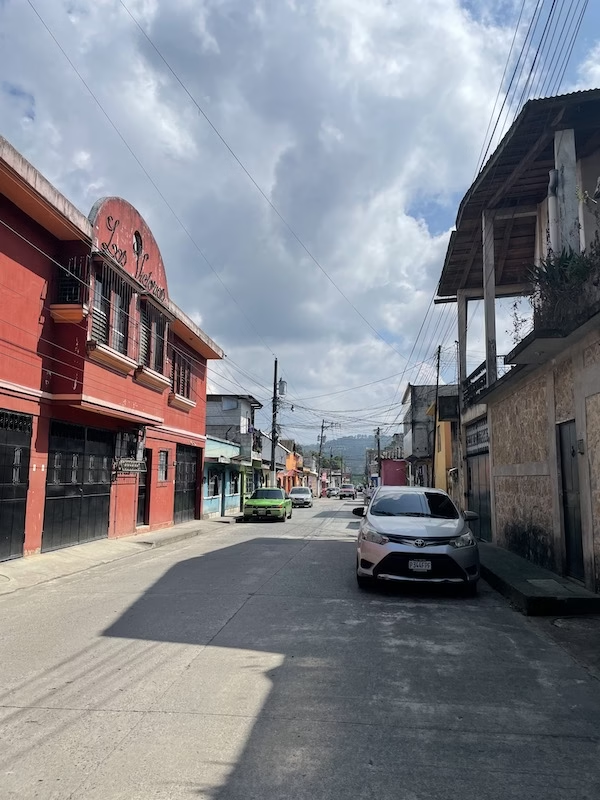
Where to Stay in Cobán
Cobán isn’t a big tourist hub, and as such it doesn’t have a lot of options for places to stay. Thankfully, Hostal Casa Tenango does the job. This little hostel isn’t going to win any awards, but it’s a decent enough place and the local owners were friendly and helpful. If you book using this link, I’ll receive a small commission (at no extra cost to you) and you’ll receive the joy of supporting an independent travel blog.
The Best Things to When You Travel to Cobán
As I mentioned above, the city of Cobán itself doesn’t have much to offer. However, it’s a great base to explore the nearby lush green highlands. The humid, misty, cloud forests are a delight for bird and flower lovers.
For those anxious control freaks who absolutely need to plan everything in advance: may I suggest Get Your Guide for booking tours? They’re generally cheaper than online alternatives and offer a wide range of activities. If you book through the following link, I’ll get a small commission at no cost to you and you’ll gain the satisfaction of supporting an independent travel blog. Click here to explore tours in Guatemala.
Go Bird Watching at the Biotopo del Quetzal
The Resplendent Quetzal is one of the most magical of all the birds. Males have iridescent emerald green feathers covering its back. Its chest is blood red. The long blue-green tail feathers trail behind and its elegant wings are tipped black. The quetzal’s head looks like it got up and left the house without combing.
The bird is endemic to Central America and is endangered, mostly due to threats of deforestation. The Aztec and Maya both considered it sacred. Quetzals rarely survive in captivity, lending the Mayans to also view it as a symbol of freedom. Seeing a quetzal in the wild is a highlight for anyone ranging from hardcore birdwatching afficionados to casual bird dabblers.
Seeing a quetzal was at the top of my list of things to do in Guatemala. In fact, the Biotopo del Quetzal was the whole reason I came to Cobán. I’d read you need to be ready at dawn to have a chance to see them. Unfortunately, we got going a little late and we didn’t arrive at the reserve until around 7:30. I was convinced we were too late.
But, luck was on our side that day. As soon as we got off the bus, we noticed a crowd of French tourists standing across the street just outside the reserve. They were armed with binoculars and long lensed cameras and were pointing avec enthousiasme at the trees.
Sure enough, there it was in all its glory. A Resplendent Quetzal, sitting on a branch next to a dilapidated old farm house. I even managed to catch a few photos before it flew away.
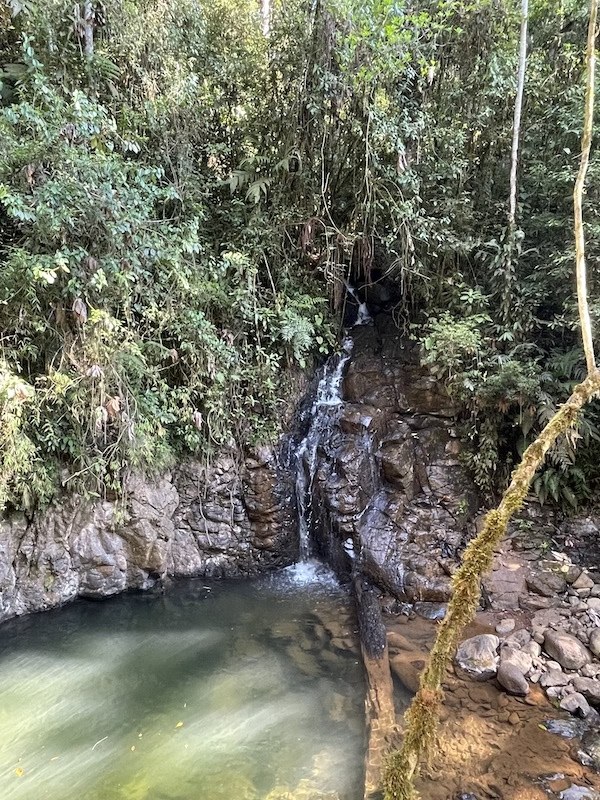
Seeing the Quetzal
If you want to see a quetzal for yourself, the best time to go is during breeding season, between March and June. This is when the quetzals leave their lofty perches and head to lower altitudes looking for a mate. The best time of day to spot a quetzal is in the morning just after sunrise or in the evening right before dusk. Although, you might be lucky like I was and catch them later or earlier. They love to eat wild avocados.
You can take public transportation from Cobán to the Biotopo del Quetzal. I believe we used Transportes Monja Blanca, but double check with your hotel or hostel. Tell the driver you’re going to “El Biotopo del Quetzal.” Alternatively, you could splurge for a cab. I thought the public bus was pretty easy, though. Just make sure you get up plenty early.
Even if you don’t see a quetzal, the Biotopo del Quetzal is full of gorgeous trails that wind through stunning cloud forest. The atmosphere is similar to the cloud forest of Monteverde in Costa Rica, but without the other tourists.
Just down the road from the official biotopo, you’ll also find the privately owned Ranchito del Quetzales. This reserve also has trails that wind through the same cloud forest as the Biotopo del Quetzal, and is another great place for birdwatching. There are quetzals here, too, as well as trogons and other tropical birds. There’s also a restaurant. Both reserves are worthwhile nature areas to travel to from Cobán.
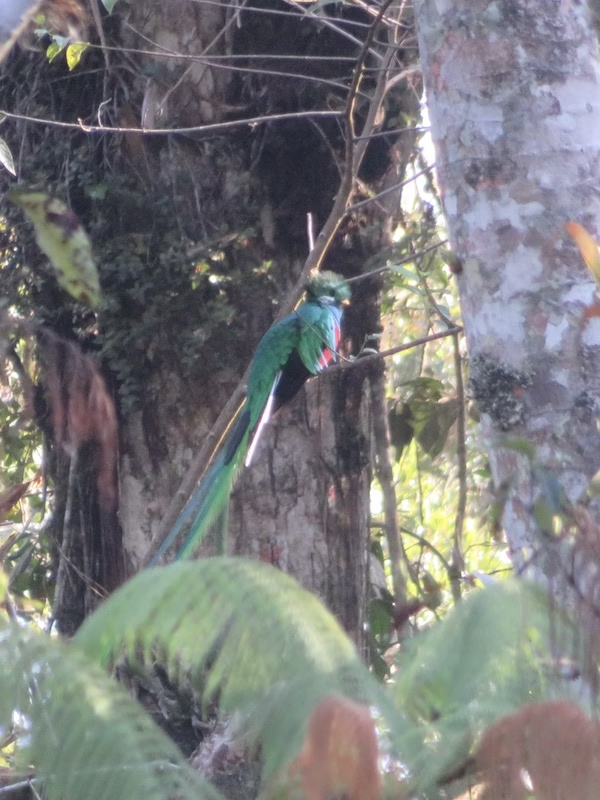
Admire the Orchids at the Orquigonia
I like flowers as much as the next guy, but have never been that particularly fascinated by them. However, I still had a fantastic time at Cobán’s orchid reserve, the Orquigonia. This little private garden has hundreds of beautiful orchids of all shapes, colors and sizes.
You can take the same bus that goes to the Biotopo del Quetzal to the Orquigonia. Just ask to be let off at the Orquigonia. It’s a much shorter drive. Once there, you’ll get a guided tour through the many gardens, as well as magnifying glasses to see some of the tiny flowers.
As you admire the orchids, you’ll learn more about them than you thought you wanted to know. For example, I never knew that vanilla comes from a type of orchid. Or, that most orchids are actually very small. If nothing else, it’ll give you a deeper appreciation of the movie Adaptation.
The Orquigonia is also much more than just a garden. It’s also a rescue and conservation center for orchids. Many orchids are epiphytes, plants that grow on other plants. When people chop down trees, the orchids attached to those trees fall and die. The folks at the Orquigonia go to deforested areas and try to save the orchids on downed trees.
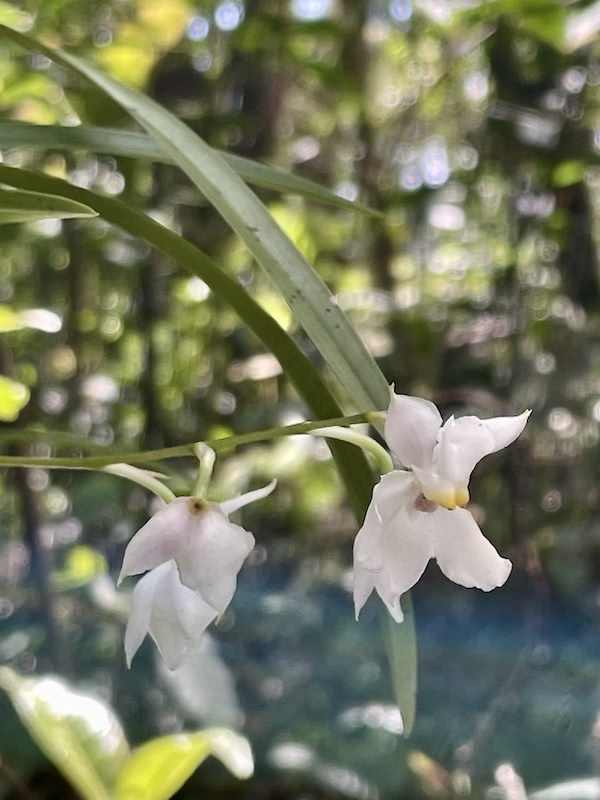
Visit Parque Nacional Las Victorias.
Now, if you only are only going to do two things when you travel to Cobán, visit the Biotopo del Quetzales and the orchid reserve. If you have time for three or more things, you can check out Parque Nacional Las Victorias. This small national park protects cloud forest and is accessible right from downtown Cobán. Numerous trails meander through tall forest and pass by a small lake. A crocodile patrols the water, so don’t bother trying to swim, but if you’re lucky you might see it resting by the shore.
The park is nice, though not nearly as extensive or wild as the reserves outside of town. Be careful, as there have been some robberies reported in the deeper recesses of the forest. We didn’t have any trouble, but we kept to the main trails and left well before dusk.
The park is accessible from the city, just off of 3A Calle.
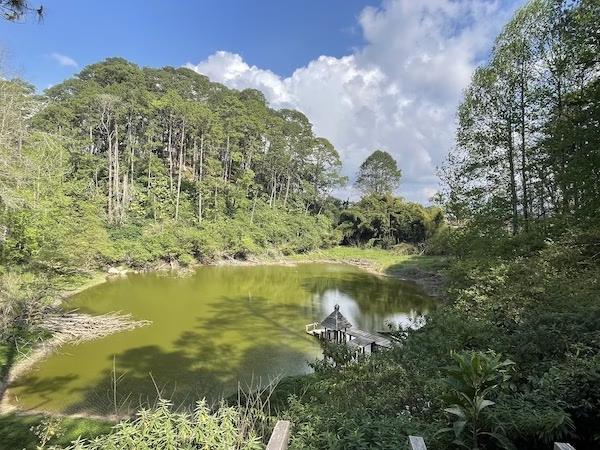
Climb the Steps of El Calvario Church
When you’re sick of cloud forest trails, you can always hike up to El Calvario, a white washed church on a hill next to Parque Nacional Las Victorias. The church itself is far more modest than some of the other colonial churches you’ll find elsewhere Guatemala. However, on the walk up you’ll see the burnt remains of where local Mayans make offerings. You also get a nice view of the city. You can find the steps leading up to El Calvario from 3A Calle, just down the street from the entrance to the park.
El Calvario and Parque Nacional Las Victorias can seem a little underwhelming compared to some of Guatemala’s other sights. If they were all Cobán had to offer, I’d say skip the city entirely.
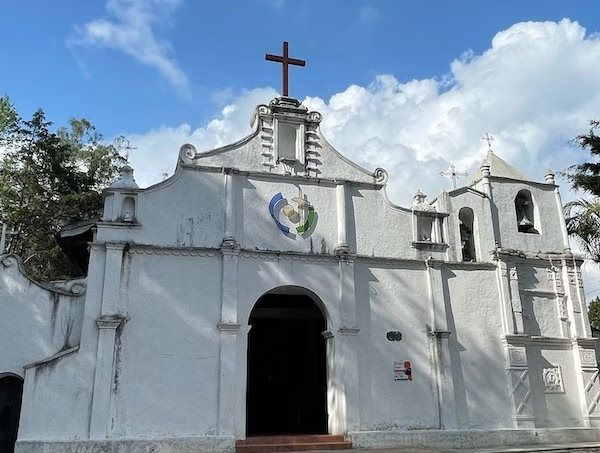
However, both the Orquigonia and Biotopo del Quetzal are well worth the trip. If you’re at all interested in flowers and birds, or you just want a place to stop on the long road between Antigua and Semuc Champey, then add a detour to Cobán as you travel through Guatemala. You’ll be glad you did. Especially if you’re lucky enough to catch a glimpse of the magnificent Resplendant Quetzal.
Find out what else not to skip in Guatemala: Go to Guatemala: A Travel Guide Without the Tourist Traps
Useful Websites for Traveling Guatemala
As much as we might long for the days when you could show up to a town with nothing more than a beat-up guidebook and a sense of adventure, today much of traveling involves being glued to our phones making bookings. I’ve compiled some helpful apps and websites below that at least help make those bookings more convenient so you can spend less time staring at your phone and more time exploring at your surroundings. Some of these sites are affiliate links that give me a small commission at no cost to you if you chose to book through them. All of them are sites I’ve used personally and have no problem recommending.
Just be sure to do your due diligence as much as possible. Only hire local guides and try as much as possible to stay in locally owned hotels and hostels so that your hard earned travel dollars actually go to support the local economies of the places you visit.
Booking.com is basically the world’s only hotel booking website. They have hotels, guesthouses and vacation rentals all over Guatemala.
Hostelworld is the go-to site for booking hostels. If dorm rooms and shared bathrooms are your thing, you’ll find hostels all over Guatemala.
Get Your Guide offers tours and activities all around the world. Unlike some other sites and apps that do the same thing, you can actually find some reasonably priced deals here.

